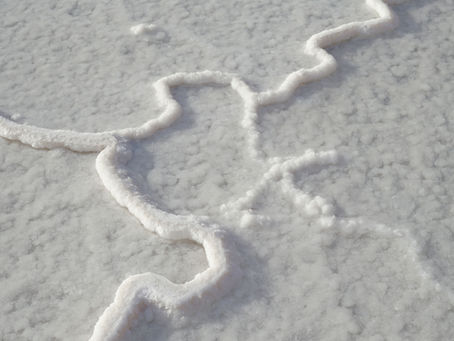top of page


Salt (NaCl): Science, History & Cuisine
Salt is primarily sodium chloride (NaCl). As a naturally occurring mineral it's known as halite or rock salt. Vital for food preservation...

Sylvia Rose
Feb 25, 20255 min read


Hetero-Fermentation in Lactic Acid Bacteria
Lactic acid bacteria (LAB) have different ways of metabolizing nutrients depending on species. Homo-fermentation produces lactic acid,...

Sylvia Rose
Feb 23, 20252 min read


Candida Species: the Good Yeasts
Candida yeasts are prevalent in nature, environment, food, fermentation and human health. Over 200 Candida species are identified, most...

Sylvia Rose
Feb 23, 20253 min read


Nucleic Acids: Nature, Environment & Health
Nucleic acids include DNA and RNA. They store, transmit and express genetic information in all living organisms. They define human...

Sylvia Rose
Feb 22, 20253 min read


Glutamates: Umami Flavors & Brain Cells
Glutamates enhance flavors like umami, making them invaluable in cuisine. One of the best known forms is monosodium glutamate (MSG),...

Sylvia Rose
Feb 22, 20253 min read


Umami the Fifth Taste: Science & Cuisine
Umami comes from the Japanese for "taste," applied to savory flavors. The four basic tastes are sweet, sour, bitter, and salty. Umami is...

Sylvia Rose
Feb 22, 20252 min read


Compost Heat: Microbes & Decomposition
Compost is created by billions of microbes in a natural exothermic process of biological oxidation, generating heat to make rich soil...

Sylvia Rose
Feb 21, 20253 min read


Compost: Heart of Sustainable Gardening
Compost is the heart of sustainable gardening. Composting turns scraps into nutritious soil, with help from microbes and other organisms....

Sylvia Rose
Feb 21, 20254 min read


How to Make a Sourdough Starter
A sourdough starter is a living mixture of microbes, flour and water giving sourdough its unique flavor and texture. Often called the...

Sylvia Rose
Feb 20, 20254 min read


Kazachstania humilis: Friendly Artisan Yeast
Kazachstania humilis ( Candida milleri , Candida humilis ), is familiar in sourdough and other fermentation. Favored by artisan...

Sylvia Rose
Feb 20, 20253 min read


Kahm Yeast: the Wild Ones
Kahm yeast is familiar in fermentation. A collective of wild yeasts including Pichia, Kazachstania and Candida spp , it's the...

Sylvia Rose
Feb 20, 20255 min read


Vibrio Cholerae: the Cholera Bacteria
Vibrio cholerae is the bacterium responsible for cholera, one of history's most destructive diseases. Cholera is an infection of the...

Sylvia Rose
Feb 19, 20254 min read


Bacterial Communication: Autoinducers
Bacteria communicate using autoinducers, or signals. Autoinducers help bacteria coordinate their actions. In quorum sensing they inspire...

Sylvia Rose
Feb 19, 20254 min read


Quorum Sensing: Microbial Coordination
Quorum sensing enables microorganisms to communicate effectively. This coordinates behavior among bacterial communities. In quorum...

Sylvia Rose
Feb 19, 20253 min read


Fruit Breakdown: Decomposition of an Apple
Apples ripen and fall to undergo earthly decomposition. Transformation from a crisp fruit to disappearance in the soil ecosystem is a...

Sylvia Rose
Feb 18, 20256 min read


Hormones in Microbes, Plants & Animals
Hormones, a term derived from the Greek word hormao meaning to excite or arouse, are signaling molecules sent by cells to influence...

Sylvia Rose
Feb 18, 20254 min read


Pheromones in Microbes, Plants & Animals
Pheromones are communication tools. Chemical substances released by an organism into the environment trigger responses to relay...

Sylvia Rose
Feb 18, 20254 min read


Cell Communication in Living Organisms
Cellular communication is a complex signaling system of living organisms from single-celled fungi to massive bodies. Cells use signals to...

Sylvia Rose
Feb 18, 20254 min read


Why Apples Turn Brown: Science & Nature
Apples turn brown when exposed to air. This phenomenon is enzymatic browning, a chemical reaction not limited to apples, but prevalent in...

Sylvia Rose
Feb 17, 20254 min read


Difference Between Oxidation & Fermentation
Oxidation and fermentation both are used by organisms to extract energy from molecules. These operate in distinct ways and under...

Sylvia Rose
Feb 17, 20254 min read
bottom of page